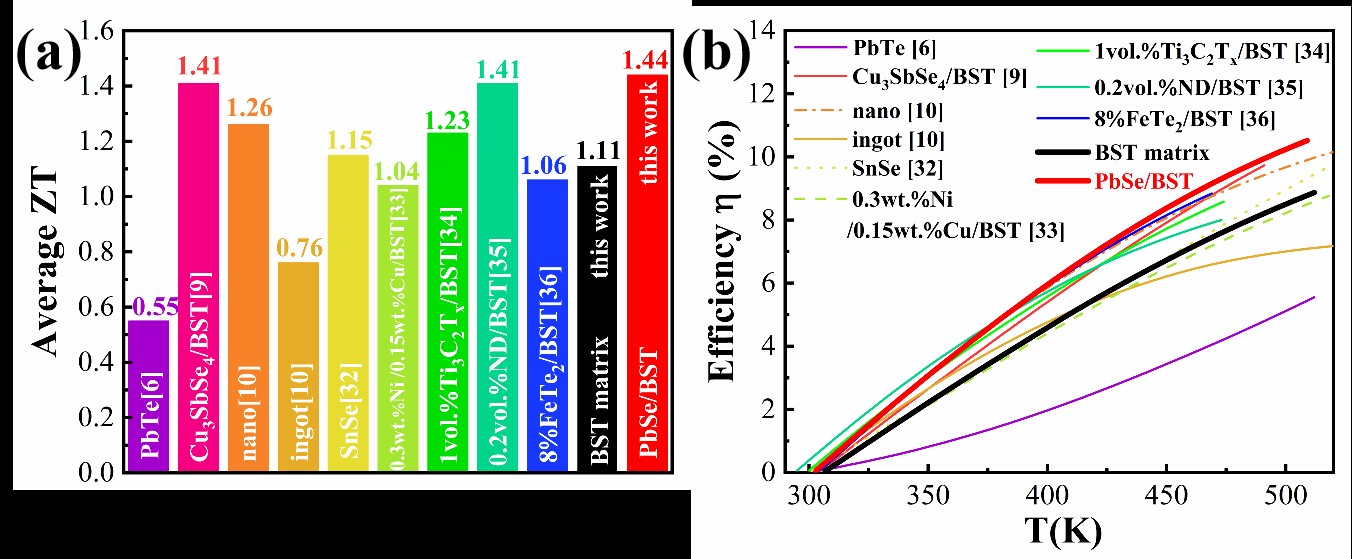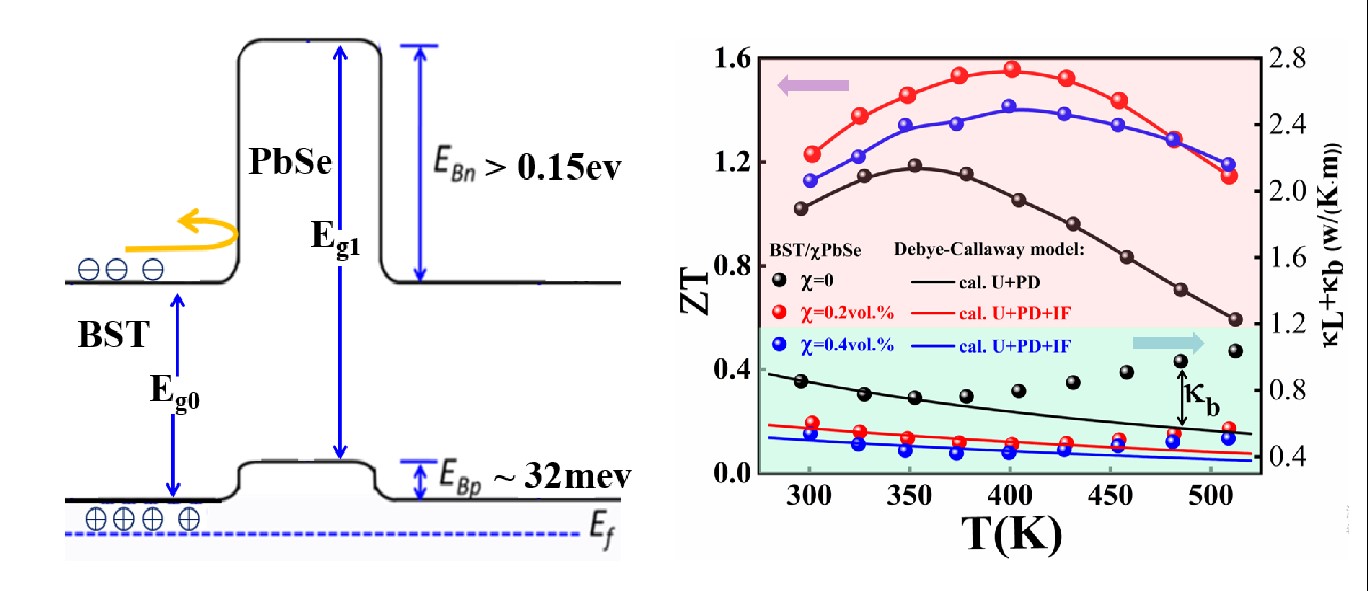Recently, scientists in the Institute of Solid State Physics (ISSP), along with their collaborators from the Southern University of Science and Technology (SUSTech), discovered high thermoelectric performance of p-type Bi0.4Sb1.6Te3 (BST) which was achieved through the scattering engineering strategy.
Thermoelectric performance is decided by conversion efficiency, which is closely related to a figure of merit, ZT. By introducing PbSe nanoparticles to the BST matrix, they regulated the scattering of majority and minority carriers and phonons. As a result, a maximum figure of merit (ZT) of 1.56 (at 400K) and average ZTave=1.44 in the temperature range 300-512K were reached.
Though a kind of state-of-the-art thermoelectric material, P-type BiSbTe alloy is solely used for refrigeration commercially near room temperatures. The reason is that its ZT would decline rapidly when the temperature increases to ~350K.
Therefore, scientists tried to construct proper asymmetric interface potentials in both conduction and valence bands for PbSe/BST nanocomposites, which could concurrently scatter majority and minority carriers with different strengths by introducing nanoparticles in the BST matrix.
The result also indicated that scattering engineering strategy was a prospected approach to elevate the thermoelectric performances of BST based system.
Link to the paper: Achieving High Thermoelectric Performance in p-Type BST/PbSe Nanocomposites through the Scattering Engineering Strategy

Figure 1. Average ZT (a) and the conversion efficiency (b) in the temperature range from 300K to 512K for the PbSe/BST composite specimen with x=0.2 vol.%. (Image by Ming Hongwei)

Table of content graphic
Contact:
ZHAO Weiwei
Hefei Institutes of Physical Science (http://english.hf.cas.cn/)
Email: annyzhao@ipp.ac.cn
 Tel: +86-551-65591206
Tel: +86-551-65591206
 Fax: +86-551-65591270
Fax: +86-551-65591270
 Emai: zhous@hfcas.ac.cn
Emai: zhous@hfcas.ac.cn
 350 Shushanhu Road
350 Shushanhu Road